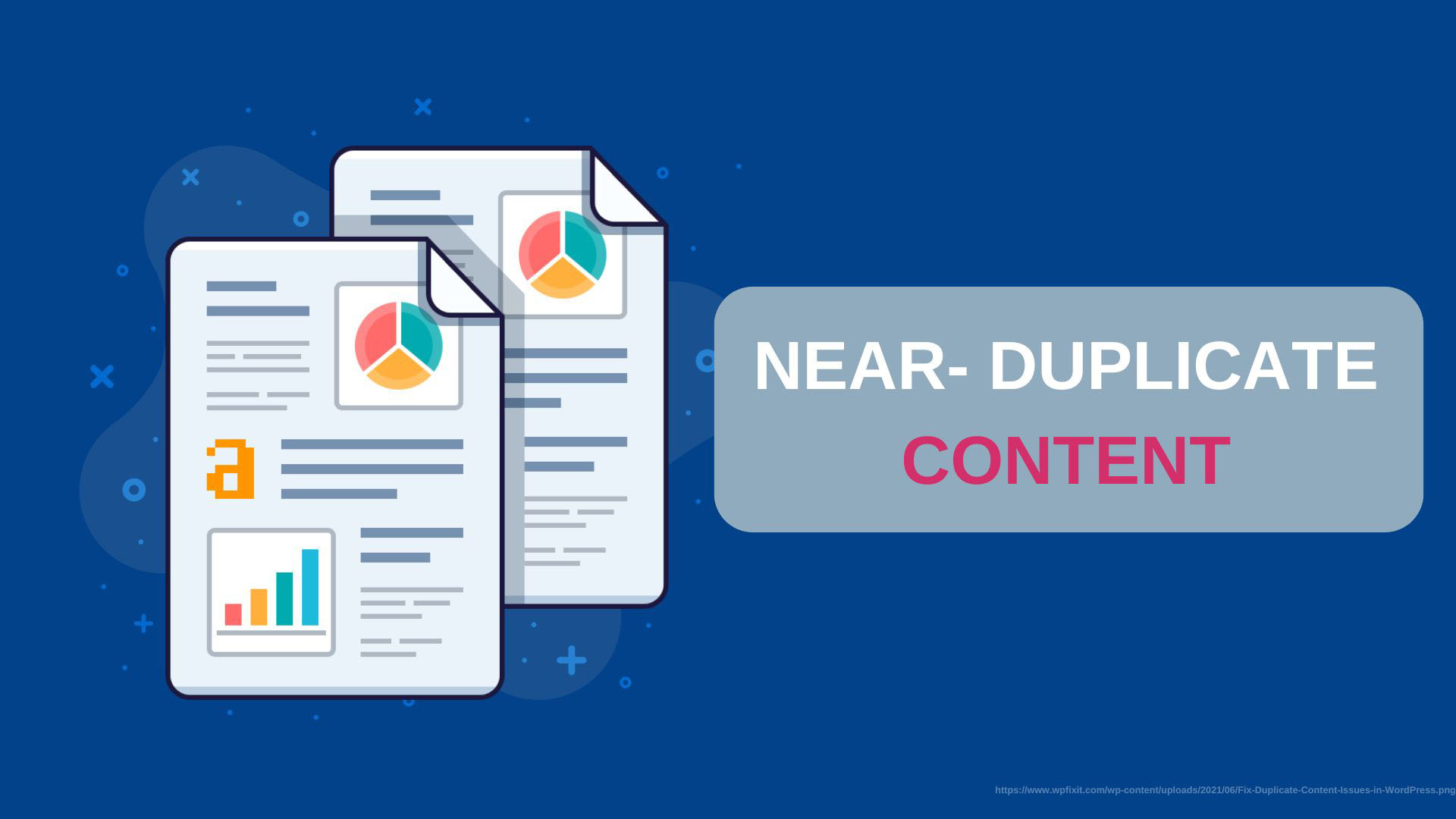Imagine discovering an identical book with a slightly different cover on every shelf in a library. Confusing, right? That’s what search engines experience when encountering near-duplicate content on your website. While you might not intentionally mislead readers, this content redundancy can hurt your website’s ranking and user experience. This delves deeply into the realm of nearly identical stuff, giving you the skills and information to recognize and handle it. By the end, you’ll understand the impact of near-duplicates on SEO (Search Engine Optimization) and discover effective strategies to keep your website’s content fresh and search-engine friendly.
What is Near-Duplicate Content?
You’ve likely encountered near-duplicate content even if you haven’t heard the term before. Its content is significantly similar to another piece on your website, often with only minor variations. Here are some common examples:
- Product descriptions with minor changes: Imagine you sell the same shirt in different colors. While the core description might remain the same, you must adjust details like color and size. These variations, if not handled carefully, can create near-duplicates.
- Paginated content split across multiple URLs: Breaking long articles into multiple pages is a good practice for better readability. However, if each page repeats the same information, it can be flagged as near-duplicate content.
- Dynamic content with slight URL variations: Websites often use filters or sorting options that create slightly different URLs for the same content. This can lead to near-duplicates if the core content remains the same.
Why Should You Care About Near-Duplicate Content?
Search engines like Google strive to deliver users the most relevant and unique results. When they encounter multiple pages with near-identical content, it becomes challenging to determine which one deserves the higher ranking. This can lead to:
- Lower search engine ranking: With multiple pages competing for the exact keywords, search engines need help prioritizing one. This can push your website down the search results page, making it harder for potential customers to find you.
- Cannibalization of backlinks: Backlinks (links from other websites pointing to yours) are crucial for SEO. If multiple near-duplicate pages compete for backlinks, the overall impact on your website’s authority gets diluted.
- Poor user experience: Imagine a user landing on a page that seems identical to one they’ve already seen. It can be frustrating and lead them to bounce off your website quickly.
The Impact of Near-Duplicate Content on Crawl Budget
Here’s an additional H2 topic to consider:
Crawl Budget: Search engines allocate specific resources (crawl budget) to crawl and index your website’s content. Near-duplicate content can eat into this budget, as search engines spend time crawling and analyzing similar pages instead of discovering and indexing your unique and valuable content. This can hinder your website’s overall visibility in search results.

Preventing Near-Duplicate Content from the Start
- Content planning: Develop a clear content strategy that outlines the topics you’ll cover and ensures you’re not creating redundant content.
- Template creation: Create templates for common content types like product descriptions or blog posts. This helps maintain consistency while allowing for customization for specific products or topics.
- Internal linking: Link to relevant existing content within your website instead of creating duplicate versions of information. In addition to enhancing user experience, this aids search engines in deciphering the structure and connections between your pages.
How to Identify Near-Duplicate Content on Your Website
There are several ways to identify near-duplicate content on your website. Here are a few effective methods:
- Manual review: This might seem time-consuming, but it’s a good starting point for smaller websites. Review your website and check for pages with similar content structure and wording.
- Copyscape: This popular tool allows you to paste your content or enter a URL to check for plagiarism across the web . While it might not pinpoint internal duplicates, it can help identify instances where you’ve unknowingly used content from other sources.
- SEO site audit tools: Several SEO audit tools like SEMrush or Ahrefs offer features to detect near-duplicate content. These tools analyze your website’s content and provide reports highlighting potential duplicates.
Strategies to Deal with Near-Duplicate Content
Once you’ve identified near-duplicate content on your website, it’s time to take action. Here are some effective strategies:
- Consolidate content: Consider combining many pages with comparable content into a single, more thorough one. This ensures you have one robust and informative page that ranks well and offers a valuable experience for users.
- Utilize canonical tags: A canonical tag designates the URL representing a page’s “original” version with comparable content for search engines. This helps search engines avoid confusion and credit the appropriate page for its SEO value.
- Add unique value: If content consolidation isn’t feasible, focus on adding unique value to each page. This could involve incorporating fresh insights, data, or media that differentiates each page and enhances its user experience.
- Three hundred-one redirects: Sometimes, you might have near-duplicates no longer relevant. To permanently reroute visitors and search engines from the outdated page to the updated, pertinent one, you can utilize a 301 redirect .
Keeping Your Website Healthy and Search-Engine Friendly
By identifying and addressing near-duplicate content, you’re taking a proactive step towards maintaining a healthy, search-engine-friendly website. This improves your website’s ranking potential and ensures a smoother and more engaging experience for your visitors.
OCH: Your Partner in Creating Unique and SEO-Friendly Content OCH is a creative digital marketing agency specializing in crafting high-quality, engaging content that resonates with your target audience and search engines. Keep near-duplicate content from dragging down your website’s ranking and user experience. Contact OCH today and let our team help you create a website that’s both search-engine friendly and engaging for your visitors.



